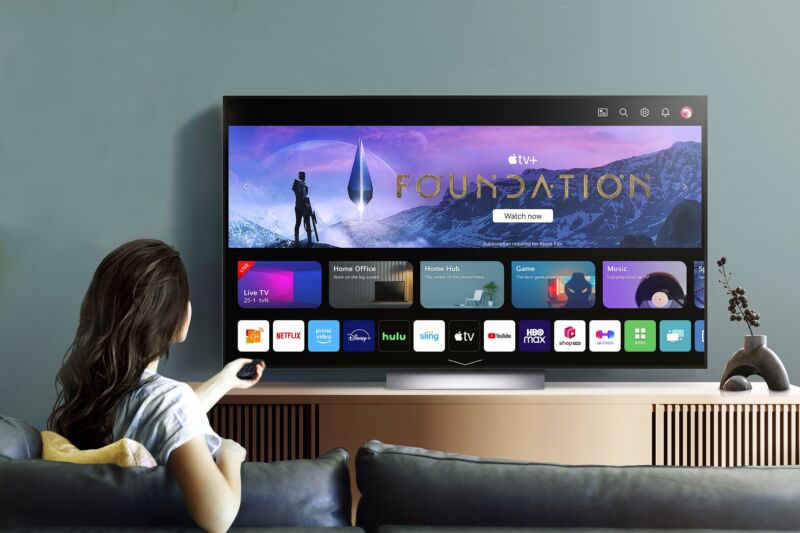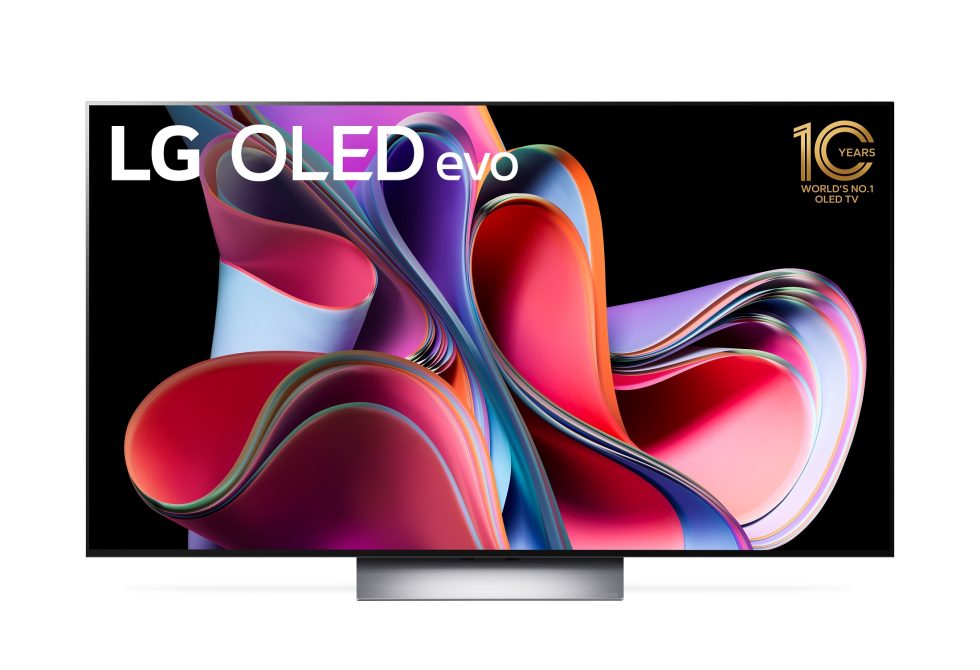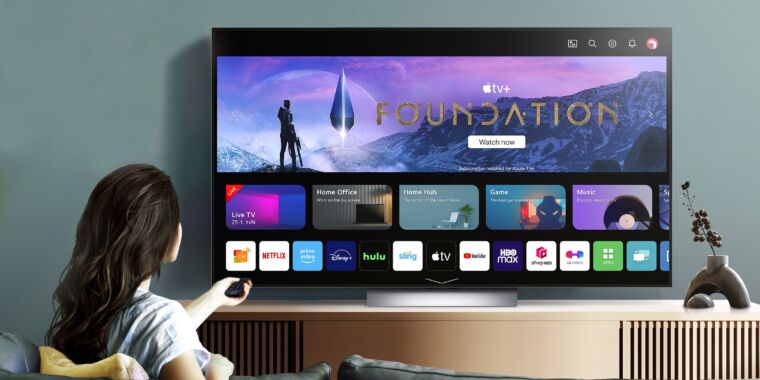
LG
January means new technology product announcements from the CES trade show in Las Vegas. LG, a regular CES participant, announced this year’s OLED TV lineup at the show. Similar to LG’s 2022 OLED TVs, this year’s focus is about boosting brightness. But in 2023, LG’s OLED TVs will also face stiffer competition, including from Samsung Display’s QD-OLED tech, which is also supposed to be getting brighter.
Today, LG announced updates to its 8K Z series (77 and 88 inches), high-end 4K G series (55–97 inches), and flagship 4K C-series (42–93 inches) OLED TVs. The company didn’t detail new additions to its less advanced B series, but Forbes reported that LG would eventually release B3 OLED TVs with an A7 Gen 6 processor and 55-, 65-, and 77-inch sizes this year. LG will reportedly no longer sell the entry-level A series in North America.
In addition to using OLED.EX panels (which LG calls “OLED Evo” in its consumer TVs), LG Display announced in late 2021 that OLED.EX panels were up to 30 percent brighter than traditional OLED panels; LG also claims the 55-, 65-, and 75-inch G3 are up to 70 percent brighter when using a feature called Brightness Booster Max. The feature isn’t available on the 83- or 97-inch G3 or any other LG OLED TV series.
According to LG’s announcement on Monday, the new TVs squeeze out more nits by using a new “light control architecture and light-boosting algorithms.” It also said that the TVs map and control brightness on “a pixel-by-pixel basis” for sharper image quality.

LG
LG doesn’t typically provide specific brightness specs on its product pages, but FlatPanelsHD reported that an LG spokesperson pointed to 1,800-nit peak brightness for the G3, with a Vivid mode being “maybe slightly brighter.” Forbes, meanwhile, reported that the 2023 G3 could surpass 1,500 nits in a 10 percent window with HDR.
FlatPanelsHD also cited a document claiming up to 2,100 nits with the G3, which it speculated might refer to the G3’s Vivid mode and 235 nits for full-screen brightness. The publication previously recorded a peak brightness of 930 nits with 2022’s G2 and 166 nits for full-screen brightness.
FlatPanelsHD and Forbes reported that LG’s new G3 TVs could make the 70 percent brightness boost claim due to Micro Lens Array (MLA). As Forbes explained, these TVs have an additional layer of small lenses used to better focus light toward the viewer without increasing power consumption or burn-in risk compared to other OLED TVs.
Growing competition
OLED is known for truly dark blacks and incredible contrast but can’t compete with LCD panels with it comes to brightness potential. The brightness performance expected from LG’s G3 TVs sounds impressive on paper, but the OLED TV landscape is also more competitive than it has been in years past, with some thanks due to Samsung Display’s quantum dot OLED (QD-OLED) entering the mix last year.
QD-OLED panels, which claim to boost color performance, including highlights, in darker areas, and across brightness settings, are already used by Samsung and other TV companies. And today, Samsung Display announced that its 2023 QD-OLED panels, which include TVs and monitors, can reach a peak brightness of “more than 2,000 nits.” Samsung Display announcement said it boosted brightness by using a new optimization algorithm, IntelliSense AI, and a material it’s calling “OLED HyperEfficient EL” to improve the color brightness of every RGB pixel.
There haven’t been official TVs announced with the brighter QD-OLED technology yet; however, Samsung Display also noted that it’s making a 77-inch QD-OLED TV panel available. It’s also worth noting that when Samsung Display announced QD-OLED at CES 2022, we saw those TVs and monitors available later that year.
While LG claims to have sold the most OLED TVs from 2013 to 2022, there is increased competition from vendors like Panasonic, Sony, and Samsung, the top TV seller overall.








